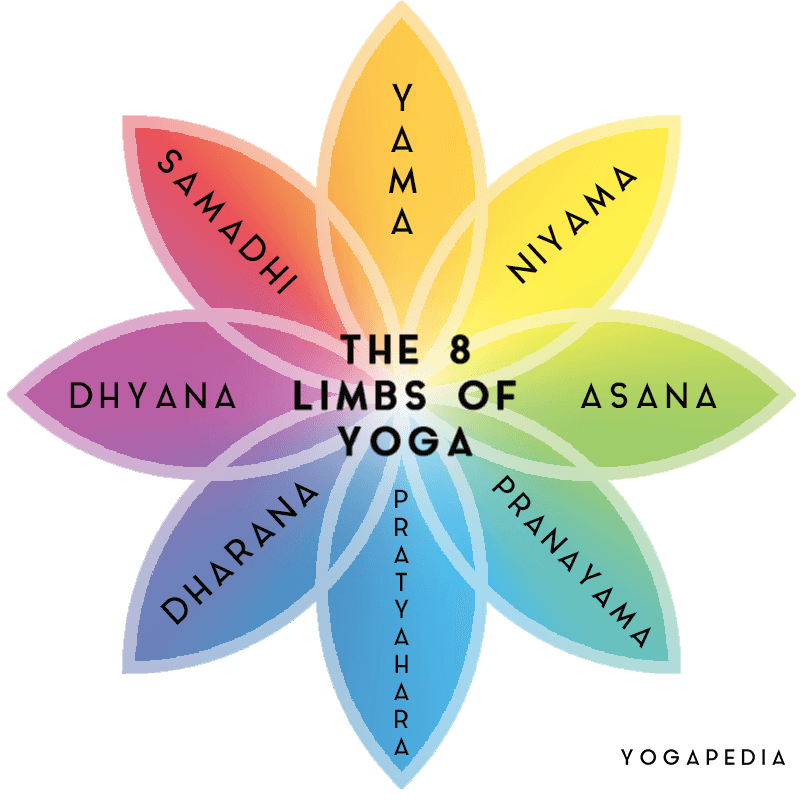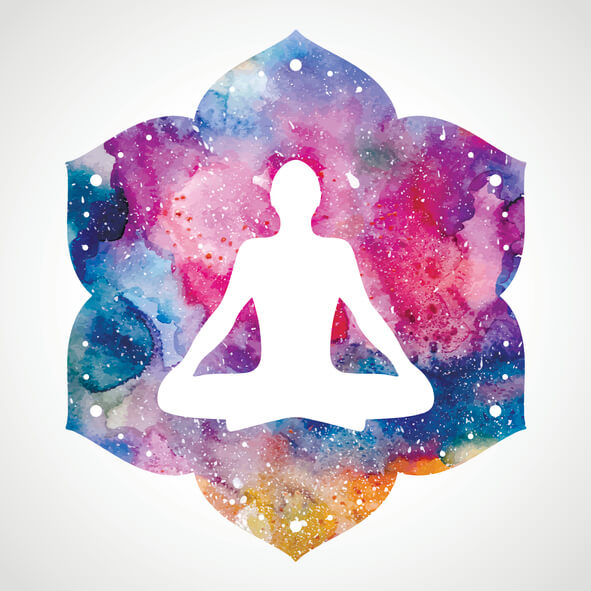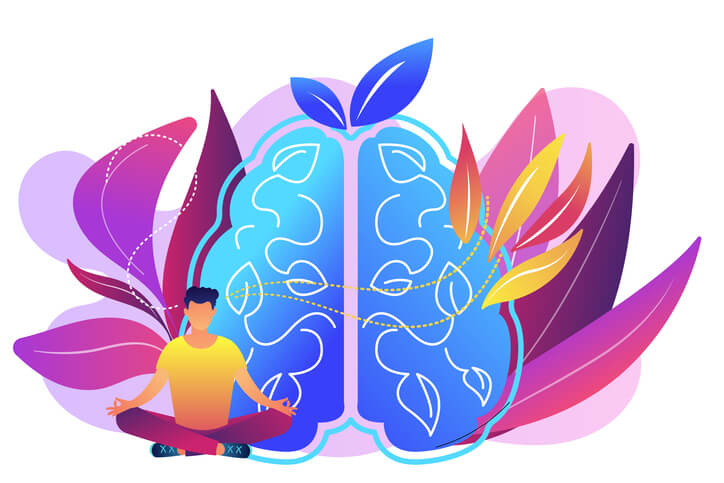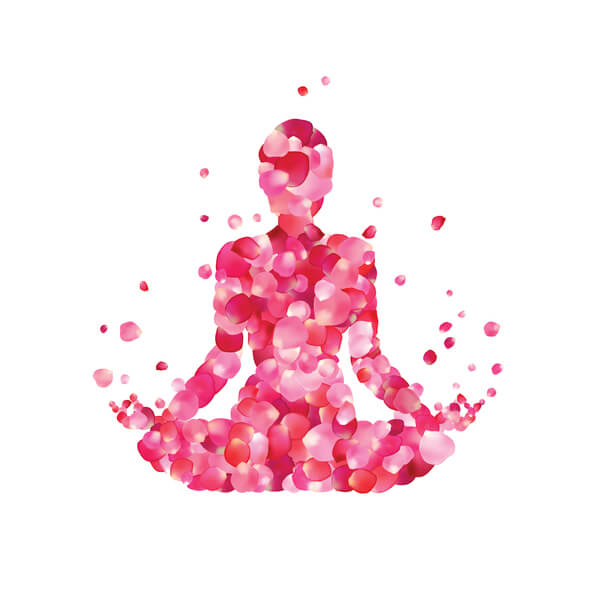Have you ever found yourself so fully absorbed in something that you lost all track of time?
Perhaps you were immersed in writing, gardening or surfing, or simply got lost in the beauty of a sunset… This kind of undivided attention is not only a common human experience, but an important facet of yoga.
Known as dharana in Sanskrit, focussed concentration is the sixth of Patanjali’s Eight Limbs of Yoga, and a vital preliminary step for meditation (dhyana) and even enlightenment (samadhi).
Modern living demands a lot from our focus; from the barrage of never-ending notifications to the constant blaring of adverts, our concentration has become a slave to so-called smart devices.
These ever-increasing distractions cause the mind to become restless, and little by little we are losing our sense of ease with the world around us.
Despite being one of our most basic human abilities, concentration is becoming something of a lost art. Indeed, it’s arguable that dharana is more important now than ever before.
Dharana & The Eight Limbs
The first known classical text on yoga was credited to an Indian sage named Patanjali around 2,000 years ago. Offering 196 “threads” of wisdom, The Yoga Sutras serve as a philosophical guidebook, providing an eight-limbed path toward living a more meaningful and purposeful life. (Learn more in A Journey Through the 8 Limbs of Yoga.)
Intended to be somewhat sequential, The Eight Limbs of Yoga help to guide practitioners on the journey of spiritual awakening. Rooted first and foremost in the most basic of social and moral obligations, the eight limbs embrace all aspects of human existence; from physical practices, such as asana and pranayama, to more subtle applications like dharana.

Dharana is composed of two Sanskrit roots: dha, meaning ‘holding’ or ‘maintaining’ and ana meaning ‘something else’. It is also derived from the verbal root dhar which means ‘to bind together’ or ‘to make stable’.
As such dharana can be understood as the practice of maintaining focus on something, as a means of making the mind stable and binding body, mind and spirit together as one.
Dharana is inseparable from the subsequent and final two limbs of Patanjali’s path; dhyana and samadhi, more commonly known as meditation and enlightenment, or union with the Divine.
Misconceptions of Meditation
Have you ever tried to empty the mind of thoughts? Give it a go.
It’s likely you’ll be defeated in no time, whilst the monkey mind swings from the trees and laughs at you for even trying.
Perhaps the most common misconception when it comes to meditation is that the sole purpose of the practice is to bring the mind to a place of no-thought.
This is by no means an impossible feat, but it may take years of dedication and discipline to reach a truly meditative state, one in which it is no longer possible to perceive the act of meditation or separate a sense of self from it. In yoga, this is known as dhyana, the seventh step on Patanjali’s eight-limbed path.

Although dhyana is translated from Sanskrit as ‘meditation,’ it is not quite the definition that most of us are familiar with these days. What many are keenly practicing as “meditation,” is in fact the practice of dharana, of learning techniques to focus and concentrate the mind in preparation for dhyana and ultimately samadhi. (Learn more in Dharana and Dhyana: Misconceptions of Meditation Explained.)
These last three limbs are collectively known as sanyam (‘control’) and are inextricably linked, since samadhi can only be reached when concentration spontaneously merges with meditation. From this perspective, meditation can be generally considered quite simply as various, progressive stages of concentration, the starting point of which is dharana.
Practicing Dharana
Focus on breath, bodily sensations, mantras, chakras or drishti are all forms of dharana, in which the mind is trained to fix on one particular thing. The subject or object of concentration is not particularly important.
After all, we know that even the simplest things can cause us to be transfixed and totally lost in the moment; the stars, the ocean, the eyes of a new-born. Dharana, therefore, really is a practice available to all, and there is no unique method that works for everyone.
The draft is quite simply to train the mind to become so completely and utterly absorbed in one thing that all sense of time, space and self dissolves.

As straightforward as this sounds, there is a frustrating paradox; the more effort you apply, the harder it is. The more you try to push thoughts away, the more stubborn they become.
Although it is certainly a discipline, concentration should not be confused with exertion.
Only when no effort is applied, is it possible to merge with meditation and become one with the object of focus. Dharana is a practice of patience, softness and ease. It’s perfectly normal for the mind to wander, and meandering thoughts in fact provide the cornerstone for practising dharana. (Learn more in 10 Mind-Blowing Insights From the Yoga Sutras on Concentration (Dharana)).
It may seem strange, but repeatedly flitting between thinking and returning to a focal point is a vital part of the meditative process, and can be a profound practice in itself.
Concentration Leading to Liberation
Dharana can be easily integrated into everyday life. Start by concentrating on only one thing at a time, whatever it may be. When you eat, just eat – don’t scroll. When you have a conversation, give the other person your undivided attention. When you’re getting from A to B, try not to multitask and instead focus on the journey.
By assimilating dharana in this way, you can slowly move toward more focussed concentration, toward glimpses of mediation.

By regularly practicing dharana, we are able to observe the patterns of the mind. Interrupting thoughts become clear, and longer gaps appear between them over time. Dharana enables deep concentration to occur naturally and more frequently, even outside of the practice.
Most importantly, there develops a strong awareness that there is both a thinker and a witness to the thinking. This is a significant step toward being free from destructive thought patterns, as thoughts begin to have less significance, less power, less control. (Learn more in Meditation & Mindfulness: What's the Difference?)
By improving mental strength and clarity in this way, dharana is ultimately the key to liberation from the mind’s suffering.

During These Times of Stress and Uncertainty Your Doshas May Be Unbalanced.
To help you bring attention to your doshas and to identify what your predominant dosha is, we created the following quiz.
Try not to stress over every question, but simply answer based off your intuition. After all, you know yourself better than anyone else.